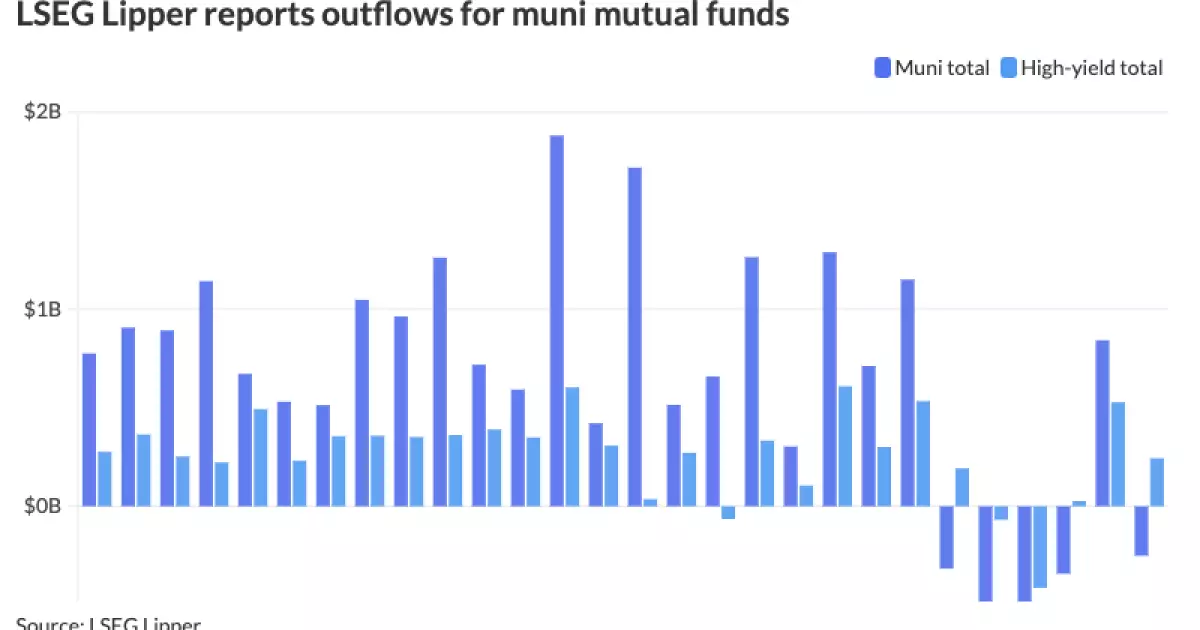The municipal bond market has exhibited minor yet notable firmness in recent days. This stabilization is largely attributed to a significant upsizing of the Triborough Bridge and Tunnel Authority’s offering, which escalated to $1.6 billion. Concurrently, a return of outflows to municipal mutual funds has unfolded amidst a backdrop of falling U.S. Treasury yields and declining equities. Notably, the ratios comparing municipal yields to U.S. Treasury yields—67% for the two-year and five-year categories, 69% for the 10-year, and jumping to 84% for the 30-year—illustrate an ongoing engagement in the market.
Analysts suggest that these shifts in yields suggest a healthy response to the previous day’s favorable U.S. Treasury performance. According to Kim Olsan, a senior fixed-income portfolio manager, though the municipal market displays resilience, it hasn’t fully capitalized on the pronounced 10-15 basis point rally seen in the taxable market. This disparity in response reflects a balance where supply constraints hinder the municipal market’s capability to align with the broader market trends.
A promising trend seen across the municipal yield curve is the resurgence of active two-way flows, evidencing an increased appetite from buyers who are recognizing the perks of elevated yield ranges among quality credits. Despite the firmness observed recently, yields are hovering at the highest levels seen over the past year, thus presenting opportunities for savvy investors.
Data surrounding customer buying reveals a favorable landscape for those looking to invest across various maturities. Strong demand has been recorded particularly in the segments covering the one to three-year and seven-year maturities and longer scopes—indicative of a dynamic market where dealers are also experiencing heightened selling pressure. These figures highlight a broader trend of significant dealer-to-customer sells, reaching between 65% and higher in these durations, far exceeding the norm of about 60%.
Within the context of short maturities and calls, the accompanying concessions present meaningful yield increases. For instance, a recent transaction involving Ohio State General Obligation bonds showcased spreads approximately 25 basis points wider than noncallable equivalents, illustrating attractive pricing for investors. Moreover, longer duration trades reflected a similar trend, offering comparison features that significantly outperformed standard rates in the industry.
Market participants reacted to new data derived from producer and consumer price indices, which projected a bond-friendly environment ahead. Consequently, this led to an uptick in buying across the yield spectrum. While a recent spike in bids wanted suggests increasing pressures, these volumes are not yet alarming but exhibit a close watch on the market environment. Some of these sales have included municipal offerings tied to Los Angeles credits, which reflected widening spreads following a Standard & Poor’s ratings downgrade.
The market has shown strong resilience despite the pressures it faces. Segments such as the Los Angeles Department of Water and Power bonds have witnessed wider trading margins, signaling notable shifts in investor sentiments. Such fluctuations are crucial as they can indicate potential volatility, making it even more important for investors to monitor their positions carefully.
In the primary market, substantial activity was observed, with the Triborough Bridge and Tunnel Authority pricing its recently increased bond offering. Significant adjustments from earlier retail pricing denote a strategic response to evolving market conditions, reflecting an agile approach to capitalizing on current investor interests. The pricing information showcased variations clearly aimed at optimizing value through different tranches and structural features.
Similarly, the Regents of the University of Colorado also capitalized on current market conditions by pricing revenue bonds that demonstrated competitive yields across several maturities. Yale University has similarly made moves by issuing revenue bonds in a bid to access capital under favorable conditions—evidence of strategic asset management in challenging economic times.
Investor trends have also illustrated remarkable shifts in cash flow from municipal bond mutual funds recently. A reported $251.2 million was redeemed from municipal bond mutual funds last week, a sizable withdrawal compared to previous weeks. In contrast, high-yield funds saw inflows, indicating a discernible preference among risk-tolerant investors seeking yield amid broader economic uncertainties.
Furthermore, tax-exempt municipal money market funds also experienced considerable outflows, bringing total assets down to $137.78 billion. While the average seven-day yield for these funds remained competitive, the preference for taxable money funds has surged in response to changing interest rates, further complicating the investment landscape.
Overall, the municipal market is evolving amid fluctuating yields and investor demand dynamics, highlighting the importance of flexibility and vigilance for market participants aiming to optimize their investment strategies amidst uncertainty.

